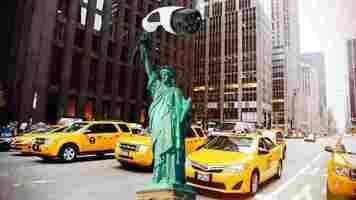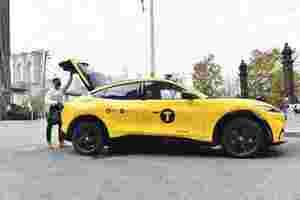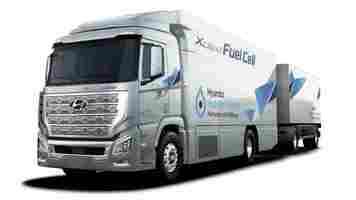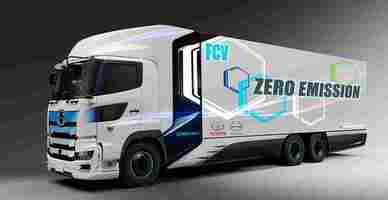How COVID-19 will change the world’s 13,000 ‘microcities’ for good
This article was originally published by Sarah Wray on Cities Today , the leading news platform on urban mobility and innovation, reaching an international audience of city leaders. For the latest updates follow Cities Today on Twitter , Facebook , LinkedIn , Instagram , and YouTube , or sign up for Cities Today News.

From reinvented shopping malls to pedestrianized suburban neighborhoods and a growing role for technology, ‘microcities’ are changing.
A new study from ABI research has identified at least 13,000 microcities around the world. It is the first time the analyst firm has quantified these dense urban developments, which include the areas in and around large airports, ports, international rail stations, venues, office parks, malls, and corporate and university campuses. They also incorporate industrial zones and the mini-cities which are emerging such as Tencent’s internet-inspired employee campus in Shenzhen , Toyota’s Woven City , and Sidewalk Labs’ now-abandoned plan for smart city development in Toronto.
“We have seen for a long time a huge interest in the technology for airports, ports, shopping malls, venues, and campuses,” said Dominique Bonte, VP End Markets and Verticals at ABI Research. “A lot of tech investments seem to be directed towards microcities. They are the focal points of economic activity, social activity and city life in general.”
While ABI expects microcities to remain dominant engines of economic growth in cities, it highlights how COVID-19 and other trends could impact the form that they take.
Down the line
With more people shopping online and working remotely, and air travel not expected to fully recover for several years, the growth and expansion of airports, malls, and business parks is likely to be curbed in certain regions or some could be repurposed. During the pandemic, there have been examples of airports being used as drive-in movie theaters and storage facilities, while malls have provided space for medical facilities, warehouses, and more.
ABI predicts that microcities will shift from “ultra-clusters” to become more distributed and smaller scale.
“The shift will arise as new linear, pedestrianized, and suburban city designs informed by sustainability, resilience, and digital lifestyle imperatives start taking hold,” Bonte said.
The concept of 15-minute cities is gaining traction around the world including in Paris and Milan, to enable residents to meet most of their needs within a short walk or bike ride from their homes.
Saudi Arabia’s Crown Prince Mohammed Bin Salman recently unveiled plans to build a 170-kilometer car-free, pedestrianized city dubbed ‘The Line‘, which aims to have all residents’ needs catered for within a five-minute walk.
Meanwhile, China’s Xiong’an New Area development, which is being built near Beijing, is designed as a “self-sufficient city” and will incorporate lessons from COVID-19 .
Most cities will promote public transport, micromobility, and other shared services to help people get around but more high-tech options could be on the way in some places.
“New forms of on-demand mobility such as airborne taxis and often underground high-speed transit, like ultra-fast trains and hyperloops, will ensure spreading urban zones remain hyper-connected,” Bonte said.
Innovation Zones
Microcities such as ports and airports increasingly have their own dedicated infrastructure to support the resources they require and reduce pressure on surrounding areas. Common technologies deployed across microcities include smart cameras and biometrics, robotics and automation, digital signage, private Wi-Fi and 5G networks, and microgrids, according to ABI Research.
“They allow addressing specific challenges related to people flow management, access and security, overall customer experience, and environmental impact while generating cost savings through maximizing operational efficiencies,” Bonte commented.
He added: “Microcities will remain hotbeds for urban technology innovation.”
Taking this idea of microcities to a new level is a recent headline-grabbing proposal from Nevada’s Governor Steve Sisolak to create Innovation Zones. The concept could effectively allow tech companies to form an “alternative form of local government,” including collecting taxes and operating school boards and courts.
A draft version of the bill , which has not yet been introduced into the legislature and is subject to change, was obtained and shared by Las Vegas Review-Journal . The goal is to diversify the state’s economy and attract high-tech companies in areas such as blockchain, artificial intelligence, Internet of Things, and robotics.
Eligible tech companies would have to own 50,000 acres of undeveloped land not within an existing town or city and would be obligated to put in US$250 million initially and have plans to invest at least US$1 billion in the development over 10 years. Governance would be overseen by a three-person board, with the same powers as county commissioners.
The idea, should it move ahead, is likely to raise some eyebrows and provoke debate about the responsibility for public services, but Bonte said it could be an extension of microcities being more self-sufficient.
“It’s interesting to see the interaction between microcities, [many of] which are at least partially private and often operate on private terrain, and cities. Nevada could hand the responsibility entirely to the microcities,” he commented, adding that it would give the private sector more accountability for transport provision and air quality, etc., while also empowering them to potentially move faster and demonstrate new approaches.
SHIFT is brought to you by Polestar. It’s time to accelerate the shift to sustainable mobility. That is why Polestar combines electric driving with cutting-edge design and thrilling performance. Find out how .
Need a cab, New Yorkers? Keep an eye out for Ford’s Mustang Mach-E
Next time you catch a cab in New York City, it might be an electric Mustang Mach-E. Yes, folks, Ford’s mass-market EV will dress in yellow and join the city’s iconic taxi ranks.



The Mustang will join the electric taxi fleet of EV startup Gravity , which is already planning to deploy a Tesla Model Y as well. The company hopes to have a fleet of at least 50 electric vehicles, comprised of both Mach-Es and Model Ys.
Gravity’s vehicles are authorized for use as taxis, under an EV pilot program adopted by the Taxi & Limousine Commission (TLC) earlier this year. As such, they are incorporated into the city’s regulated fleet of yellow cabs.
Both vehicles will be available for hail either on the street or through standard yellow taxi e-hail apps.
They’ll also come with a few extras like a panoramic roof, a 12-inch screen display for the riders’ entertainment, and AI tech that promises to “help prevent driver distraction as well as monitor the vehicle for safe driving behaviors. ”
To maximize the operating hours, Gravity will use its own charging hub at Manhattan Plaza on West 42nd Street, where the vehicles will be charged overnight during off-peak hours.
It’s not surprising that taxi and rental operators are adding electric vehicles to their fleets. In the case of NYC it’s a necessary move, given that the New York state has decided to ban gas guzzler sales by 2035 .
What will be interesting to see is how private companies will cooperate with governmental bodies like the TLC to scale up the numbers in time.
And as for which kinds of EVs we can expect to see hitting the city’s streets as yellow taxis, the TLC has already published a list of approved vehicles:
Tesla Model Y, Long Range AWD
Volkswagen E-Golf, SE, SEL Premium
Volkswagen ID.4, Pro RWD, 1st Edition, Pro S
Volkswagen ID.5, Pro AWD, Pro S AWD
Hyundai Ioniq Electric, SE, Limited
Audi E-Tron, Premium Plus Quattro, Prestige
Kia Niro EV, EX FWD, EX Premium FWD
Mustang Mach-E, Select, California Route 1, Premium RWD
Since we’re two down, I can’t wait for the next electric taxi choice!
Hyundai’s first fuel cell-powered trucks arrive in Switzerland — bye bye, diesel
Hyundai‘s first batch of seven XCIENT hydrogen fuel cell-powered trucks have been presented to its customers in Switzerland today, kicking off the company’s plan to deliver 1,600 such zero-emission heavy-duty vehicles by 2025.

That’s the result of a joint venture between Hyundai Hydrogen Mobility (HHM) and Swiss firm H2 Energy . 50 of those will roll out by the end of this year.
Reuters reports that Switzerland-based commercial customers will be leasing the trucks from HHM to transport goods around the country, and will be supported by newly set up hydrogen charging station infrastructure.
The XCIENT trucks manage around 400 km (~250 miles) of driving range with a full trailer in tow, thanks to a 350-bar 32kg hydrogen tank on board. Hyundai says these vehicles can be recharged fully within 8-20 minutes.
The idea behind this project is to replace diesel-powered trucks in markets aiming to reduce the use of fossil fuels, so it’ll be worth following Hyundai and others in this space across Europe to see how they fare over the next few years.
Toyota also made the news earlier this week after announcing its plan to build a fuel-cell powered truck for North America , with a view to present a prototype within the first half of 2021.


Between various such ventures, Bloomberg predicts that global sales of medium and heavy-duty commercial fuel-cell vehicles will reach 10,000 units annually by 2030.
Hyundai will host a live streamed event to officially launch the XCIENT Fuel Cell truck on October 14, along with its roadmap for clean commercial mobility. You can follow the stream on the company’s YouTube channel at 10AM KST/6PM PDT/9PM EDT/3AM CEST.
SHIFT is brought to you by Polestar. It’s time to accelerate the shift to sustainable mobility. That is why Polestar combines electric driving with cutting-edge design and thrilling performance. Find out how .